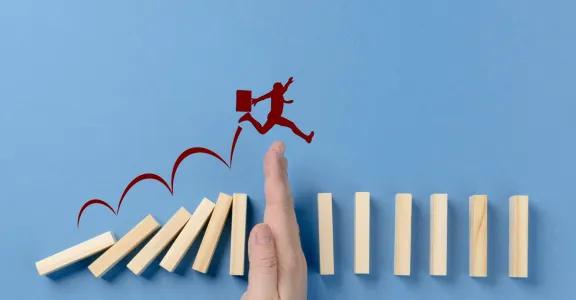Removing Circular Economy hurdles - blog 3
In the circular economy, products are sometimes offered ‘as a service’, instead of sold to the clients. But isn’t this circular business model very similar to leasing? How can targeted services to extend the lifespan of products be beneficial to companies?
Sirris and Agoria have started a series of blogs, that will provide some insights from front-running companies in the circular economy, derived from the Agoria-Sirris Learning Network CE Connect for the technological & manufacturing industry. During the Executive Exchange session in April 2023, the C-level management from the network shared its insights and lessons learned in a panel discussion with Atlas Copco, Signify, BSH, conTeyor & Barco. The panel’s insights are reflected in a blog series: 'Removing Circular Economy hurdles'.
Radically new business models are explored in the Circular Economy, where ownership and responsibility are shifting from the customer to the supplier. During the debate on circularity at the Agoria-Sirris Learning Network CE Connect, comparisons were made with the leasing model. But is this correct? The panellists from Atlas Copco, BSH, Barco, conTeyor and Signify started the discussion with the provocative statement: “A circular product is just a product that is leased”.
Leasing is not a circular solution
Our panellists indeed see some similarities between circularity and leasing. The user of the product does not own the product, but is able to use it. He is offered some additional services, such as maintenance, through a recurring fee. In this respect, leasing and circularity have the same result.
However, it is clear to the panel that leasing does not guarantee a circular solution.
Leasing does not lead automatically to a longer and more responsible use of the product (lifespan extension), on the contrary. For example, if leasing is just a financial construction without a circular backbone, it is worse than a regular, linear sale. Consider the practice of leasing steps in cities. As users don’t feel responsible for the steps, some users tend to mistreat them by jumping off the curbs or parking them in the rain, and there is no consideration for the end of life of those steps.
Design for circularity
“By leasing, you miss the biggest opportunity to extend the lifespan,” confirms Guy Van Wijmeersch, Director Innovation & Design Thinking at Barco. That is why he sees the need to design for circularity, in combination with these new ‘as a service’ business models: “The right mindset and skills for designers, engineers and product managers are crucial. We need a dedicated design for circularity and therefore product managers with a holistic innovation focus, including taking care of the planet, safety, social aspects, ....”
According to Bert Derom, President Portable Air Division at Atlas Copco, we are in a catch-22 situation. “Do we start by (re)designing the product so that we are ready for service extension and life extension later? Or do we start by expanding our service activities on sub-optimal products, in order to learn how to improve our products? Both approaches are valuable. But because the pressure is on, we’d better start on both sides simultaneously.”
Adapt your organisation and start with small steps
Significant changes are imminent to move to circular business models. Experience shows the best way to realise them is by taking small steps, setting up experiments and learning.
Bruno Vermoesen, Head of Brussels for Office Environmental Governmental Affairs at BSH, notes that the results of these first experiments will spontaneously spread further throughout the organisation: “All departments need to be involved in the new circular business model. Contracts, for example, become more complex. The ERP system has to cope with new forms of value capture that are very different from revenue from single sales. The IT services need to make adjustments to be able to track and update products. Sales, service, inventory management and logistics must be organised differently and should be supplemented with additional data. Cost calculations must take into account the entire life cycle. At the end of the useful life, the material cycle has to be closed. And so on.”
Choose a more appropriate model
Conclusion? We are facing a shift from selling to servicing. “Suppliers are becoming responsible for the full life cycle,” stresses Gert Roeckx, Country Manager of Signify: “Therefore, they should focus on service, upgradeability, disassembly, ...”
Leasing models do not always encourage this stewardship. Although leasing could be an enabler for circularity, new service models may be more appropriate.
In these models, producers and clients share the same goals and ambitions: doing more with less and extending life. Possibilities include a take-back guarantee, upgradeability, 15-year spare parts availability, condition monitoring, contracts for maintenance, upgrades, repairs and so on. Each company chooses the model that suits it best and, if needed, builds a dedicated network of partners to support this. No one should face this circular challenge alone.
|
How do you deal with this challenge, and what did you learn so far? Feel free to provide your insight related to this topic.



